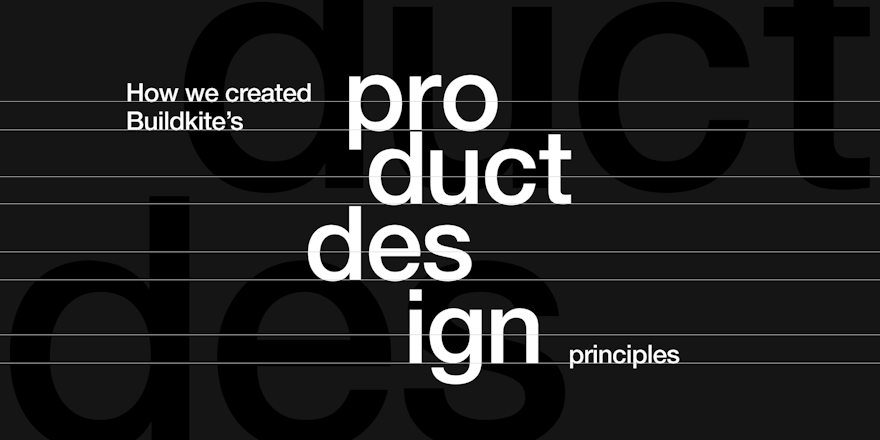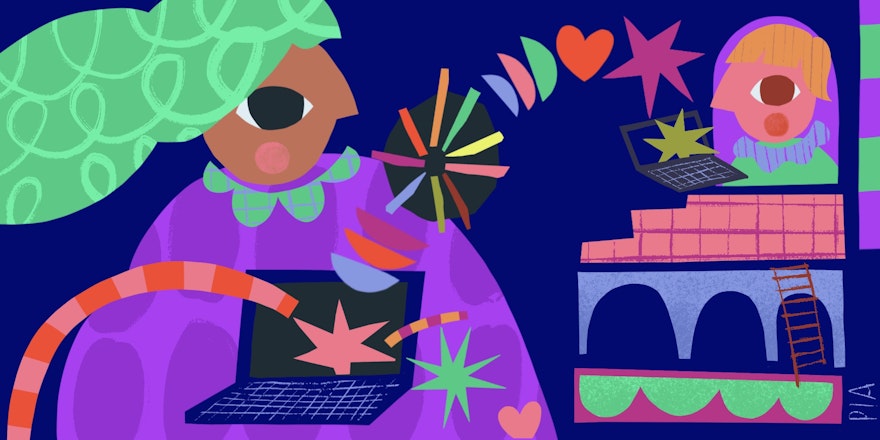
In my role on Buildkite’s People Ops team, I spend a lot of time talking to folks about their experiences at other organizations. Something that comes up a lot is the onboarding process. For many, it wasn’t great.
Consider this experience on your first day at a new job:
You sit down in a conference room, while someone goes through a dry, uninspiring PowerPoint presentation. And while a company may feel great that they’ve checked all the boxes and said all of the things they were required to say, that does nothing for you – the new person in this community.
What you would really want when you start in an organization is a friend who takes you aside and says, “Hey, here's the lowdown on how we work.” A friend to whom you can ask questions you would be too embarrassed to ask publicly. A friend to teach you about all of the unspoken things that make up this group.
At Buildkite, we’ve tried to create a system that naturally allows new team members to feel as comfortable as they can as quickly as they can without rushing. It’s a process that I, along with my colleague Ben Christensen, designed at the request of Buildkite’s founders.
When we were presented with the opportunity, I initially had only one question: Can it be weird?
A clown’s take on onboarding
Before describing Buildkite’s welcoming process in too much detail, I should explain who I am and why I was allowed to create this “weird” thing. I’m Stefan Bramble and my title at Buildkite is Facilitator and Communications Coach. What does that mean? Well, I spend a lot of time making myself available to people to talk just how they are at work or personally. I'm always looking at how well people are working together and whether it's going efficiently.
The technical ideas of the welcoming process were influenced by my background and experiences. I have been trained and have worked as an actor, teacher, and a clown. And when I say “clown”, I’m not talking about white makeup and a red nose. Clowning is a really specific skill. It's nothing to do with circus clowning; nothing to do with juggling. It's to do with walking on stage, opening your heart up, and letting an exploration happen in front of people; taking risks and not knowing what's going to happen next.
I used this training as a facilitator of a program for disadvantaged youth across Australia and later when I began my own consultancy working with corporate clients.
Buildkite’s initiation process
Developing the welcoming process was something that Ben and I did in partnership. Ben is a long-time Buildkiter who has a deep understanding of how the organization works and could think logically about the order of steps and how to implement them.
So what would your first four weeks at Buildkite actually look like? Let’s dive in.
Week 1 - What is happening?
The first week at Buildkite is a basic orientation. You just need to establish some things about how we work. Your boss will mark your start at Buildkite by meeting you at the (virtual) front door, sitting you down and welcoming you into the group.
Your boss will also publish a post to the company on Basecamp called, “Why we hired you.” It’s not a list of technical reasons why you were qualified for the job, but rather the emotional reasons why we selected you to be part of this group.
During this week I will be your Buildkite guide and you can ask me as many questions as you want. And the questions can be about anything--from how to request leave, to the best ways to interact with a particular team member.
Week 2 - Who am I?
The second week's focus is on you. In our workshop, I’ll ask you to draw a picture of what you want for your life. I'll draw a picture at the same time. Then we talk about what we've drawn. The idea is the paper is magic, you can have whatever you want, you just have to draw it.
It's a cool way for us to get to know each other and learn about our values.
Week 3 - What is Buildkiteyness?
Week three’s workshop is automatic writing. You just write about what Buildkite is to you. You've been with us for three weeks, so you’ve probably got some ideas.
Week 4 - What is my role at Buildkite?
The capstone task of the welcoming process is presenting yourself to the group and saying: “This is who I am.” “This is what I believe in.” “This is what I think Buildkite is.” “And this is what I can offer Buildkite.”
The idea behind this is that you’ll claim your role at Buildkite. During week 4, we sit down and we come up with what you are going to say.
On speech day, your boss will introduce you – thus initiating you into the group. You’ll speak, and then the group then reflects back what they heard and any experiences that they want to share.
After the speech, you do a reflection. You’ll write a letter to yourself, which you’ll hide in your house. Over the next year, we’ll check in periodically, and in a year's time, we look at the letter and discuss what the first year at Buildkite has been like for you.
What does this all mean?
Initiations, rituals, claiming a role – I’m using a lot of terms that don’t sound like they have much to do with onboarding. You may be thinking, “Why do I have to go through all of this just to start a job?”
So I don’t think of someone as just starting a new job, but rather entering a new group. Companies are, after all, simply groups of people at their core. And when you are brought into a new group, you need to be given the space to figure out who you are in relation to it.
My work has been heavily influenced by my time working with different communities in the not-for-profit education sector. I have had the honor of working with a range of different communities across Australia. Something I have learned from these experiences is that strong communities create a space for new members that acknowledges transition. Corporate culture is not very good at this. We don't let people actually acknowledge that a change is happening.
In some sense, the Buildkite welcoming process is meant to allow a new member and the larger group to actually acknowledge this. It allows conversations to happen about what our “group-ness” is, our shared mission, and what we stand for.
So it may be a bit weird, but it bonds us together and forces us to consider how every new person entering the Buildkite group advances our culture.



